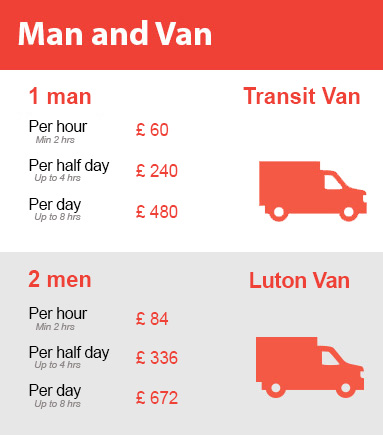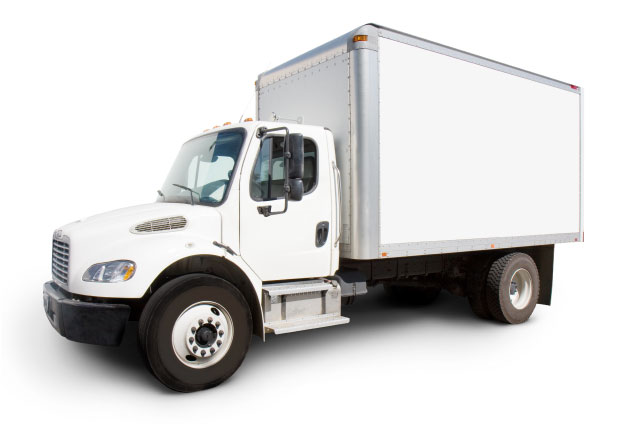Packing Simplified: Key Strategies for Your Moving Task
Posted on 11/06/2025
Packing Simplified: Key Strategies for Your Moving Task
Moving to a new place can be both exciting and overwhelming. As the anticipation grows, so does the mountain of boxes and belongings you need to sort through. Fortunately, packing doesn't have to be complicated. With the right strategies and a little forethought, you can simplify your packing process, reduce stress, and ensure that your moving day is as smooth as possible. In this comprehensive guide, we'll walk you through proven techniques to master the art of organized packing for relocation, making your moving task much more manageable.

Why Packing Strategies Matter: The Foundation of a Successful Move
Many underestimate the importance of an efficient packing strategy for moving tasks. Not only do effective techniques keep your belongings safe, but they also save precious time and effort along the way. Whether you're relocating locally or embarking on a long-distance adventure, a streamlined packing process helps you:
- Reduce the risk of damage or loss to your valuable possessions
- Minimize moving-day chaos and misplaced items
- Eliminate last-minute stress by following a clear plan
- Streamline unpacking and settling in at your new home
Ultimately, taking time to master efficient moving and packing methods pays off throughout your transition, making it a positive, organized experience.
The Ultimate Pre-Packing Checklist
Before diving into boxes and bubble wrap, set yourself up for success with these essential pre-packing steps:
- Set Your Moving Date: Lock in your move-out and move-in dates. This allows you to create a realistic timeline for each packing phase.
- Gather Packing Supplies: Stock up on high-quality moving boxes, packing tape, markers, bubble wrap, furniture covers, and specialty containers.
- Declutter Ruthlessly: Purge items you no longer need or use. Donate, recycle, or throw away anything you don't want to bring to your new home.
- Inventory Your Belongings: Make a room-by-room list. This aids in both packing organization and insurance documentation.
- Designate a "Do Not Pack" Zone: Set aside items you'll need on moving day (documents, essentials, valuables, chargers, medications).
The more you prepare in advance, the easier your actual packing and moving processes will be.
Core Strategies for Effortless Packing
1. Pack by Room, Not by Category
When you're packing for a move, tackling your home room by room prevents confusion and leads to a more methodical process. Here's how to do it effectively:
- Start with Least-Used Spaces: Begin with guest rooms, storage areas, or seasonal closets.
- Finish with Everyday Essentials: Kitchenware, daily-wear clothes, and toiletries should be packed last.
This approach makes both packing and unpacking logical, helping items find their new places fast.
2. Use the Right Packing Materials
Quality packing supplies make all the difference. Invest in:
- Sturdy cardboard boxes in various sizes
- Specialty containers for dishes, mirrors, or wardrobe items
- Bubble wrap, packing peanuts, moving blankets, and mattress covers for fragile or large items
- Heavy-duty tape and zip ties for security
- Permanent markers, colored labels, and inventory sheets
Never overfill boxes or leave empty spaces. Filling gaps with soft items, like towels or clothes, helps cushion your valuables.
3. Label Everything Clearly
One of the simplest yet most effective moving and packing tips is to clearly label all boxes on multiple sides. Try these methods:
- Label by Room: Write the destination room ("Kitchen," "Master Bedroom") on each box.
- Number Your Boxes: Pair your boxes with a master inventory list for extra organization.
- Use Color Coding: Assign a marker or sticker color to each room for quick identification.
- List Contents: Note main items on at least one box side to make unpacking easier.
Clear labeling smooths both the loading and unloading process, avoiding mix-ups and wasted time.
4. Pack Essential Moving Day Items Separately
Reserve a suitcase or "open-first" box for crucial items you'll need right away, such as:
- Medications and vital documents
- Chargers and electronics
- Toiletries and a change of clothes
- Snacks, water, and cleaning supplies
Keep this bag or box with you in your car to avoid hunting for essentials amidst your packed belongings.
5. Be Strategic About Heavy Items
Pack heavier items, like books and dishes, in small boxes to prevent overloading. Use larger boxes for lighter, bulkier things such as bedding, clothing, or pillows.
- Distribute Weight Evenly: Mix light and heavy items when possible.
- Don't Leave Void Spaces: Fill gaps to keep items from shifting and breaking.
Room-by-Room Packing: Pro Tips for Every Zone
Kitchen Packing Tips
- Wrap Fragile Items: Individually wrap glasses, plates, and ceramics in bubble wrap or packing paper. Use dish-pack boxes for extra protection.
- Seal Liquids: Use plastic wrap under lids and place bottles upright in sealed bags.
- Pack Small Appliances Smartly: Remove and pack detachable parts. Use original boxes if available, or use ample padding.
Living Room Packing Tips
- Secure Electronics: Use original packaging or anti-static bubble wrap for televisions, gaming systems, and computers. Photograph cable setups for easy reassembly.
- Protect Furniture: Disassemble when possible. Cover surfaces with moving blankets or shrink wrap to prevent scratches.
- Roll Rugs: Wrap in plastic to keep them clean during transit.
Bedroom & Closet Packing Tips
- Use Wardrobe Boxes: Keep clothes on hangers and transfer directly into tall boxes.
- Pack Shoes Carefully: Keep shoes together and stuff with socks to maintain their shape.
- Protect Mattresses: Cover with a special mattress bag or plastic sheeting.
Bathroom Packing Tips
- Sort Essentials: Pack only daily-use items for immediate use. Discard empty or expired products.
- Seal Toiletries: Prevent spills with taped tops and zippered bags.
Garage & Outdoor Packing Tips
- Drain Equipment: Safely empty fuel from mowers or trimmers before packing.
- Organize Tools: Bundle rakes, shovels, and secure blades with sheaths.
- Dispose of Hazardous Items: Research local regulations for paint, solvents, or chemicals you can't transport.
Packing Simplified: Additional Tips and Mistakes to Avoid
What to Avoid for a Smoother Move
- Procrastination: Waiting until the last minute leads to chaos. Start packing weeks ahead to avoid stress.
- Mixing Rooms: Packing by category (candles from all rooms, books from multiple shelves) causes confusion during unpacking.
- Overpacking Boxes: Too much weight damages boxes and makes moving risky.
Pro Packing Hacks from Moving Professionals
- Use Soft Goods as Padding: Wrap fragile items in towels, sheets, or sweaters to save on bubble wrap.
- Photograph Valuables: Take pictures of high-value goods and electronics for insurance or warranty purposes.
- Choose Transparent Bins: Use clear plastic containers for items you'll need immediately - you'll spot them easily among cardboard boxes.
- Bundle Cables and Remotes: Place all TV, gaming, and appliance remotes and cords in labeled bags taped to the device or box.
After the Move: Efficient Unpacking Strategies
Unpack Essentials First
Open your "essentials" box upon arrival. Set up beds, charge devices, and ensure you have toiletries, food, and linens for the first night.
Follow the Packing Plan in Reverse
Unpack room by room, starting with the kitchen and bedrooms. Having clearly labeled boxes will pay off here!
Dispose of Packing Materials Responsibly
Break down boxes for recycling or donate them to friends or local charities. Store bins for future use.

Frequently Asked Questions about Simplifying Packing for Moving
- Q: When should I start packing before a move?
A: Begin non-essential areas 4-6 weeks before moving day. Start with storage rooms, then progress to daily-use spaces. - Q: How can I make unpacking easier?
A: Label boxes for each room, keep an inventory sheet, and pack "open first" essentials separately. - Q: Is it worth hiring professional packers?
A: If you have tight timelines or valuable items, hiring pros can provide peace of mind and ensure efficient packing techniques.
Your Streamlined Moving Task: In Summary
Successful moves start with packing simplicity and strategy. By decluttering, planning room-by-room, using quality packing supplies, and labeling intelligently, you can transform a chaotic moving day into an organized, stress-free transition. Remember, the more effort you invest in packing efficiently for moving tasks, the more effortless and enjoyable your new beginning will be!
Ready to put your new knowledge to work? Start early, stay organized, and embrace the adventure. Packing simplified means more time to enjoy the next chapter of your life!
```




